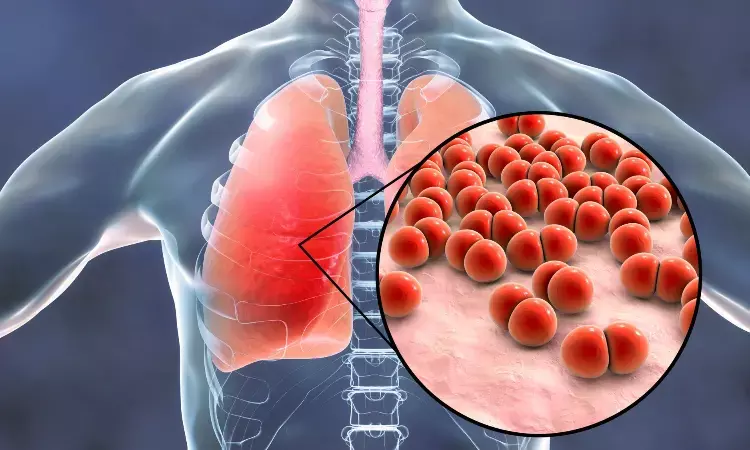- Home
- Medical news & Guidelines
- Anesthesiology
- Cardiology and CTVS
- Critical Care
- Dentistry
- Dermatology
- Diabetes and Endocrinology
- ENT
- Gastroenterology
- Medicine
- Nephrology
- Neurology
- Obstretics-Gynaecology
- Oncology
- Ophthalmology
- Orthopaedics
- Pediatrics-Neonatology
- Psychiatry
- Pulmonology
- Radiology
- Surgery
- Urology
- Laboratory Medicine
- Diet
- Nursing
- Paramedical
- Physiotherapy
- Health news
- Fact Check
- Bone Health Fact Check
- Brain Health Fact Check
- Cancer Related Fact Check
- Child Care Fact Check
- Dental and oral health fact check
- Diabetes and metabolic health fact check
- Diet and Nutrition Fact Check
- Eye and ENT Care Fact Check
- Fitness fact check
- Gut health fact check
- Heart health fact check
- Kidney health fact check
- Medical education fact check
- Men's health fact check
- Respiratory fact check
- Skin and hair care fact check
- Vaccine and Immunization fact check
- Women's health fact check
- AYUSH
- State News
- Andaman and Nicobar Islands
- Andhra Pradesh
- Arunachal Pradesh
- Assam
- Bihar
- Chandigarh
- Chattisgarh
- Dadra and Nagar Haveli
- Daman and Diu
- Delhi
- Goa
- Gujarat
- Haryana
- Himachal Pradesh
- Jammu & Kashmir
- Jharkhand
- Karnataka
- Kerala
- Ladakh
- Lakshadweep
- Madhya Pradesh
- Maharashtra
- Manipur
- Meghalaya
- Mizoram
- Nagaland
- Odisha
- Puducherry
- Punjab
- Rajasthan
- Sikkim
- Tamil Nadu
- Telangana
- Tripura
- Uttar Pradesh
- Uttrakhand
- West Bengal
- Medical Education
- Industry
Ferritin-to-Albumin Ratio Predicts Mortality Risk in Non-COVID-19 Pneumonia Patients: Study

A new study has found that the ferritin-to-albumin ratio (FAR), a biomarker that reflects both inflammation and nutritional status, can predict short-term mortality in critically ill patients with non-COVID-19 pneumonia. The findings highlight how routinely available blood tests may offer valuable insights into patient outcomes, providing a practical way to identify those at higher risk.
The research, published in Respiratory Medicine (Feng et al., 2025), analyzed data from 827 patients admitted with pneumonia to the intensive care unit. By examining ferritin, a marker of systemic inflammation, alongside albumin, which reflects nutritional and physiological reserve, the team calculated each patient’s FAR and tracked survival over 28 and 90 days. Patients with higher ratios at admission consistently showed a greater risk of death during both time frames. This association remained significant even after adjusting for demographics, comorbidities, and other clinical variables.
The results suggest that FAR captures the combined impact of inflammation and nutritional depletion on patient outcomes, offering a more holistic measure than single biomarkers alone.
The study’s authors emphasize the potential for FAR to be used as a simple, cost-effective tool in critical care settings. Because ferritin and albumin levels are already part of standard laboratory testing, clinicians could easily calculate FAR without requiring additional procedures or expenses.
This could aid in early risk stratification, helping identify patients who may need closer monitoring or more aggressive treatment. Although further prospective studies are needed to validate the findings, the evidence suggests that FAR could complement existing severity scores and guide personalized care strategies for patients with pneumonia. By bridging inflammation and nutrition into a single measure, FAR may become a valuable addition to the clinician’s toolkit for improving outcomes in serious respiratory infections.
Reference:
Feng, J., Zhao, T., Huang, Y., Lai, S., & Chen, G. (2025). Ferritin-to-Albumin Ratio Predicts Short-Term Mortality in Critically Ill Patients with Non-COVID-19 Pneumonia: A Retrospective Cohort Study from MIMIC-IV database. Respiratory Medicine. https://doi.org/10.1016/j.rmed.2025.108361
Dr. Shravani Dali has completed her BDS from Pravara institute of medical sciences, loni. Following which she extensively worked in the healthcare sector for 2+ years. She has been actively involved in writing blogs in field of health and wellness. Currently she is pursuing her Masters of public health-health administration from Tata institute of social sciences. She can be contacted at editorial@medicaldialogues.in.
Dr Kamal Kant Kohli-MBBS, DTCD- a chest specialist with more than 30 years of practice and a flair for writing clinical articles, Dr Kamal Kant Kohli joined Medical Dialogues as a Chief Editor of Medical News. Besides writing articles, as an editor, he proofreads and verifies all the medical content published on Medical Dialogues including those coming from journals, studies,medical conferences,guidelines etc. Email: drkohli@medicaldialogues.in. Contact no. 011-43720751


